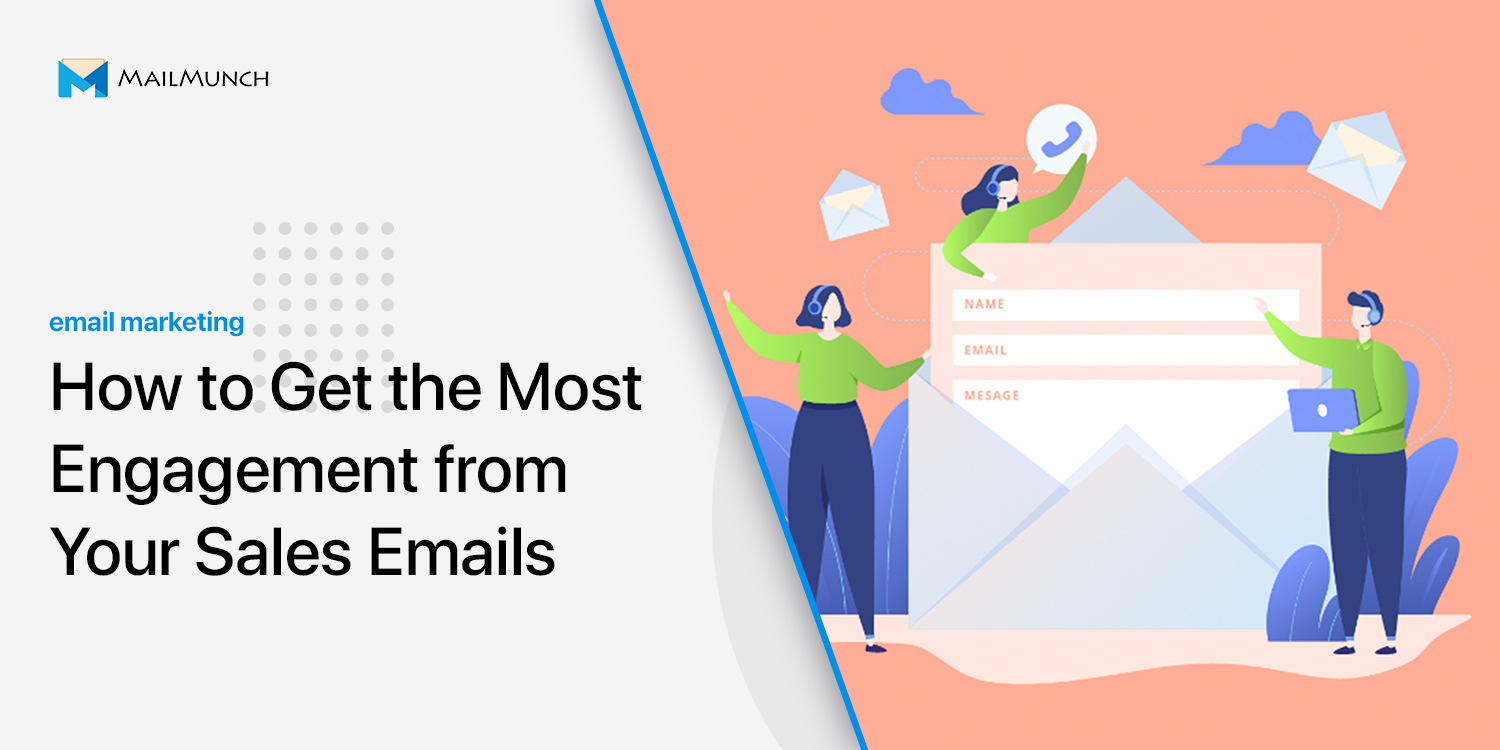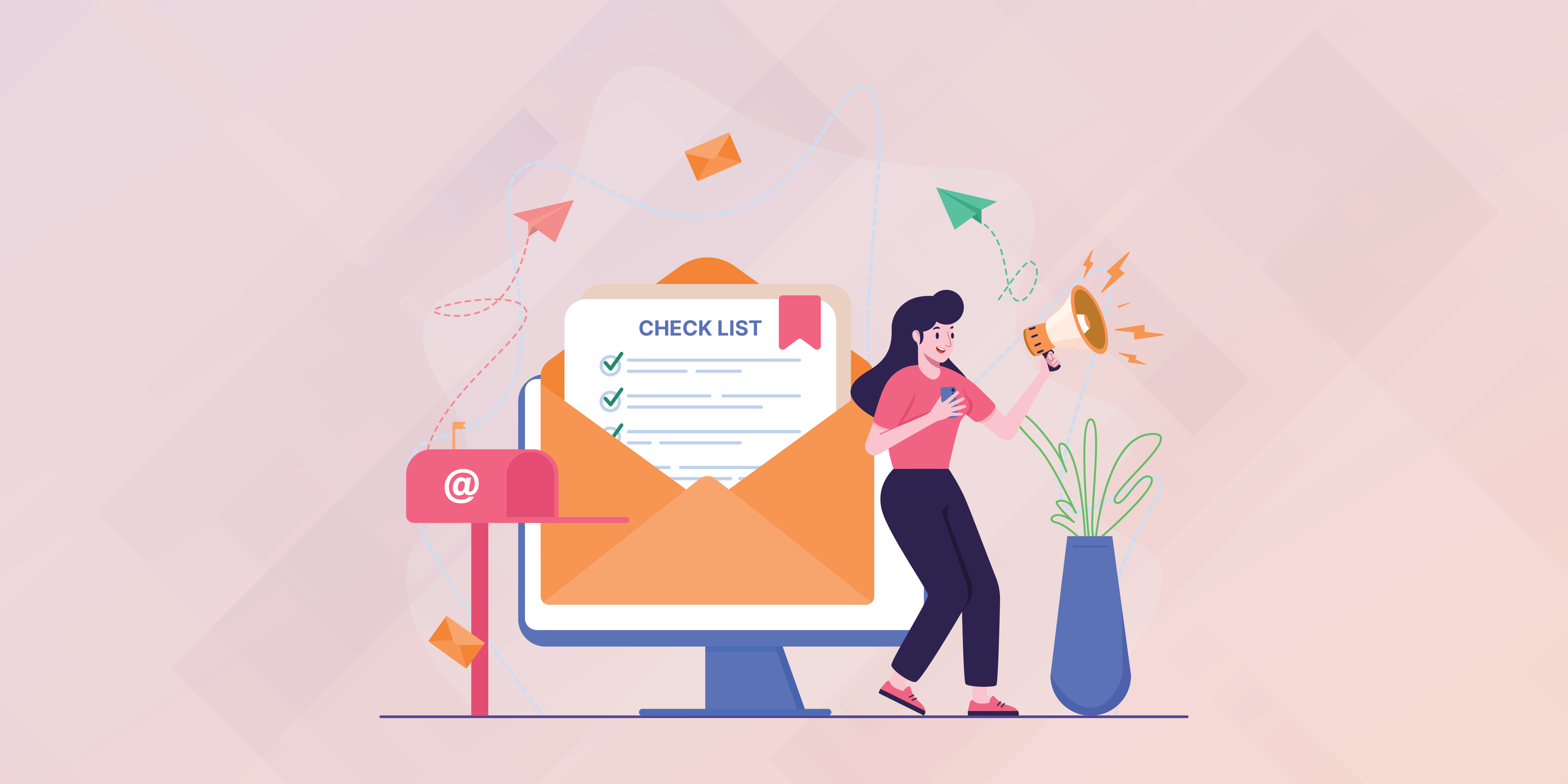

Last updated on
March 9, 2023
According to HubSpot, email marketing generated a return on investment (ROI) of 4,200% in 2021. If you're not using email to distribute your content, you might be missing out on the 73% millennials who prefer business communications to come via email. Another compelling statistic is that 50% of US respondents check personal emails at least 10 times per day.
For brands that are failing in email marketing, the problem mostly lies in low engagement rates. So how can brands attract more email engagement and improve their email marketing ROI? Check out these top tips to secure the most engagement from your sales emails.
Let's face it. Customers will not see any point in engaging with you if they don't see value in your products and services. Buyers are looking for products that fulfill specific needs and wants. For higher engagement sales, ensure your product:
The best products are those that help customers fulfill a particular need. It’s important for product features to deliver benefits in line with what the customer wants and that solve the customer's pains. If you're in a competitive market, sales training games can guide your team in showcasing how your product is more effective than the competitors' products.

To attract better results through higher reader engagement, create affordable offers. Your potential customers are looking to buy products with prices within their budgets. Customers are looking to invest in products that will deliver a higher return compared to the money they pay.
If your product isn’t selling well, or if you’re just starting out, consider sending emails with discount offers. Introductory discounts and holiday discounts are a few examples of offers that can boost your email engagement rates and sales.
Boost engagement rates by selling products that fulfill the customer's wants and needs. A quality product is one that doesn't break easily and needs few or no enhancements to perform its functions.
Take the risk of buying off of your customer’s mind. For expensive products, provide warranties with a promise to protect your customers against product malfunctions. Do you or can you offer a 30-day money-back guarantee?
Your product needs to perform as advertised each time the customer wants to use it. Frequent malfunctions can increase your email engagement rates, but with negative sales results and hurtful testimonials.
Your potential and existing customers will engage more with your brand if you have a reputation for a fast and high-quality after-sales service. For example, you can keep the conversation going by sending out surveys to past customers. Increase engagement by allowing your customers to provide anonymous input that can improve your products and services.
Your customers will likely be more excited about products that work well with other products they are already using. If your product requires a host of new enhancements, you risk turning off your potential customers' interest.
Top sales trainers affirm that your sales email recipients can only engage with your brand if the recipients are actually opening the emails. If your email open rates are low, you can improve your stats by:
Your email recipients will likely only open emails they think are relevant to their needs. According to HubSpot, marketers who segment their email campaigns realize as much as 760% rise in revenue.
If your emails get caught up in spam filters, your recipients may never see your message. Use email best practices to prevent your emails from being flagged as spam. Avoid spam filters by:
Of all the email elements that affect open rates, the subject line has the most significance.
For years, brands have been using similar subject line formulas. Recipients filter out these common subject lines as white noise. To stand out from the competition, you need to be creative with your brand's subject lines. Some tips for creative subject lines include:
Once your recipient opens your email, wow them with amazing content. If recipients like your content and find it relevant, they are more likely to engage with you. Happy readers may also forward the email to their contacts, widening your reach.
If your content speaks to your recipients' interests, the recipient may even start getting excited each time they receive mail from you.
You can increase the relevance of your email content by including links to valuable resources. For example, linking to webinars and useful videos can increase the possibility of receiving replies and boosting click-through rates (CTR).

Customers value consistency. When you deliver regular emails with a consistent message, you're more likely to attract feedback and build your brand image.
In contrast, inconsistent messaging may reduce the value of your emails and reduce subscriber loyalty.
According to Econsultancy, only 5% of companies personalize their emails. Yet 94% of marketers agree that personalizing emails is essential for the success of an email marketing campaign. The findings show that about 60% of sales professionals lack training on how to personalize their email content and have some confusion on how to implement personalization.
Neil Patel recommends the following ways to personalize your email marketing.
Sales negotiators strive to ask the right questions to uncover customers' needs and wants. Ask customers why they visit your site or what moved them to subscribe to your list. Use customer feedback to segment your market and to improve your offers.
Use your customers' feedback and actions to create buyer personas. Group customers using a mix of the actions they take and other identifying attributes.
Use A/B testing to find out when's the best time to get more engagement. For instance, you may be receiving more open rates and increased engagement if you send out your emails at 8 am on Mondays rather than 5 pm on Fridays. Your East Coast customers may also have different engagement rates at different times compared to your West Coast customers.
Set up automated behavioral trigger emails. These are emails you send in response to how a customer uses your products or services.
For instance, when your customer abandons the cart, you could send them a reminder of their pending purchase. Trigger emails attract a 152% higher open rate compared to regular emails and prompt customers for a response.
Trigger emails work well in encouraging cross-sells and upsells. Trigger emails can also be used to promote new products and advise buyers on new updates.
You can use company emails to create a human connection between you and your recipients. For example, you can send emails from an address such as [email protected] rather than [email protected]. Using a personal email address attracts higher open rates, engagement rates, and CTR. Make your business even more personal by using conversational tones and personal pronouns such as "I" and "we."
Linking your emails to your content marketing campaigns can increase customer targeting and engagement rates. For instance, you can pair an email campaign to a particular landing page for a set of buyer personas.
The email and marketing content should share common features such as the same look and design. The email–content pair should bear the same personalized call to action for unified customer experience.
You might craft the best sales email, but without a relevant call to action (CTA), your recipient may be left confused. Your email readers need guidance on what to do next. You don't want to leave them asking, "So what?"
In sales training, the sales force learns to tell their audience what to do next – always moving towards the close. Use a hyperlinked button or text to direct readers to your landing pages. Make use of compelling language to persuade readers to do more than just read your email. When readers click on your CTA, they should land on your company resources to learn more about your brand or make a purchase.
Though CTAs drive action, you also need to beware of reader fatigue. As a marketing essential, CTAs have bombarded readers for a long time, and some people quickly get tired of clicking through. Some best practices to use CTAs to increase engagement and drive action include:
In the past, having one CTA button at the end of the email used to work. Nowadays, people have so much going on online and may not read your email to the end.
Having more than one CTA within the content provides multiple opportunities for the reader to click through at different stages of the content. You can place one CTA button at the header, a few more within the email body, and one at the very end.

Though it's okay to have multiple CTA buttons, it works better if all your CTAs focus on one action. You risk creating subscriber overwhelm if you guide your readers to many different responses.
For example, it works better to have about four CTA buttons, each directing readers to the same landing page for a new product offer. Having one button direct to the offer, another to your home page, and another button to your social media page can leave the reader confused and lead to email abandonment.
Sales experts are divided on where's the best place to put your CTA button. Yet sales experts tend to agree that A/B testing can guide you on what works best for your audience. Some sales campaigns may drive more results by placing the CTA above the fold while others work better with a CTA set within the email signature.
As a rule of thumb, CTAs above the fold work best for emails where readers can quickly understand the purpose of the email. If your offer needs more explaining, placing the offer at the end may drive more results.
CTAs drive more engagement when they stand out from the rest of your email. While a text hyperlink can work, a well-designed button can drive 28% higher engagement rates. Use a color that complements the rest of your text while still standing out. Use appropriate button sizes to fit with your overall presentation. Make use of white space to draw the eye.
The words you use for your CTA are an important persuasion tool. Sales trainees learn to use impactful action-inducing words that create a sense of urgency. Make your copy simple and easy to understand, such as "Order Today" or "Book Now."
Keep your CTA short and to the point. Use relatable language like "me" and "I" to encourage subscribers to click. For example, "Yes, I want a demo" or "Sign me up." CTAs that are two to four words long fit more organically to brand messages while providing a clear action path for the reader.
Your email engagement rates can impact your sales results and conversion rates. To boost your engagement rates, personalize your messaging. Include CTAs to direct readers to the desired action. Strive to increase your email open rates and, above all, make sure you have a product that people want.
Content marketing guru at Mailmunch. I’m passionate about writing content that resonates with people. Live simply, give generously, stay happy.
Tags:

M. Usama
April 19, 2024

M. Usama
April 19, 2024

M. Usama
April 18, 2024